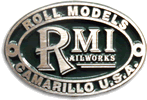Early Caboose History
The origins of both the car and its name are enveloped in myth as well as fact. According to popular belief, the name came from the Dutch word for a ship's galley, "kabuis." The first cabooses in the early 1800s were basically makeshift shacks built on an empty flatcar to keep the train crew out of the weather. As railroads started using purpose-built cabooses, they soon realized that cabooses offered a good vantage point to keep an eye on the back half of ever-lengthening trains. To improve the view, railroads added cupolas—the lookout post atop the car—to the roofs of cabooses. The caboose went from being just shelter to being an important safety device mandated by law in most states.
At first, railroads assigned a caboose to a conductor for his exclusive use. Conductors often decorated their cars' interiors with curtains and personal photos. They often stocked a pantry for cooking meals, so the caboose became their home away from home. But as trains moved faster and urbanization spread, cabooses were assigned to operating districts and began to take on the more utilitarian role of just bringing up the rear of the train.
Who's on Board?
For most of the 19th century and the first few years of the 20th, most cabooses carried a conductor, brakeman, and flagman. Before the era of automatic air brakes, the engineer signaled by whistle when he needed to slow down or stop. The rear end brakeman's job was to climb over the moving train and make his way forward, turning brake wheels that rose above the car roofs. The head-end brakeman, riding the engine, would work his way rearward. When the train stopped, the flagman detrained from the caboose and walked back a prescribed distance to signal approaching trains that a stopped train was ahead. Once underway again, the caboose (or "rear end") crew would sit up in the cupola and watch for smoke from overheated wheel journals (called hotboxes) or other signs of trouble.
Bay Window or Bobber?
Caboose designs have always been driven by three factors: safety, crew efficiency, and a need to keep the cost down. This last factor reflects that cabooses are "non-revenue" equipment. In other words, these cars don't make any money for the railroads. Nevertheless, cabooses cost money to build and maintain, so railroads often sought ways to reduce caboose construction and operating costs through design. Most railroads opted for a caboose with two trucks (called "bogies") and eight wheels, but some eastern roads chose a no-truck, four-wheel design called a "bobber." The lack of trucks reduced the amount of steel needed for the caboose, thus lowering the final cost. This car got its name from the way it would "bob" down the track. Its tracking was so bad that several states enacted laws prohibiting the use of bobber cabooses (although by then the railroads had already stopped buying them).
Cabooses were one of the last car types to change from mostly wood construction to all-steel construction. It was hard to justify replacing a perfectly good wood-bodied caboose with a safer steel body if it wasn't earning money for the company. Nevertheless, safety concerns and legislation had most wood cars replaced by steel by the 1960s. A few railroads, including some of the Burlington Northern & Santa Fe predecessors, used plywood-sheathed cabooses up through the 1970s.
RMI offers the only complete line of 2.5" and 3.75" scale cabooses which range in size from a diminutive 4-wheel to an all steel mainline model with over 2,000 individually set rivets. Each unit has detail items such as hinged operating doors, ladders, handrails, brake wheels, stove chimney, even keyholes in the doors! All are precisely crafted from laser- etched and cut steel sheet. Particularly note the fine detail and fit of the vestibules and steps. A high-back riding seat (located under a removable roof section) and optional custom lettering are also available.



